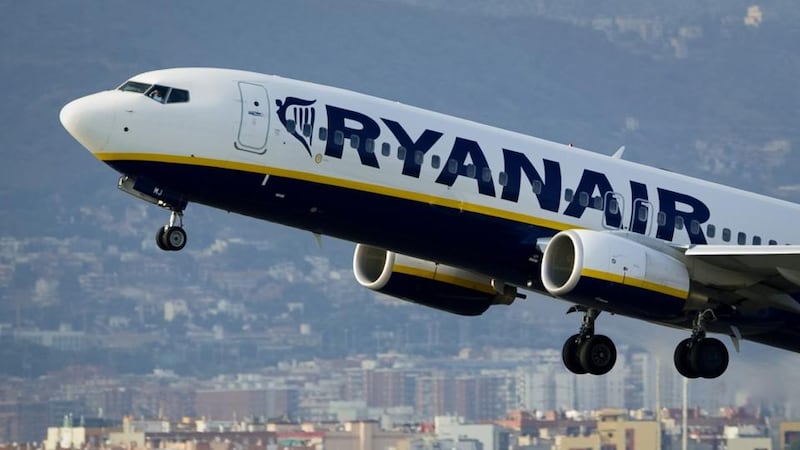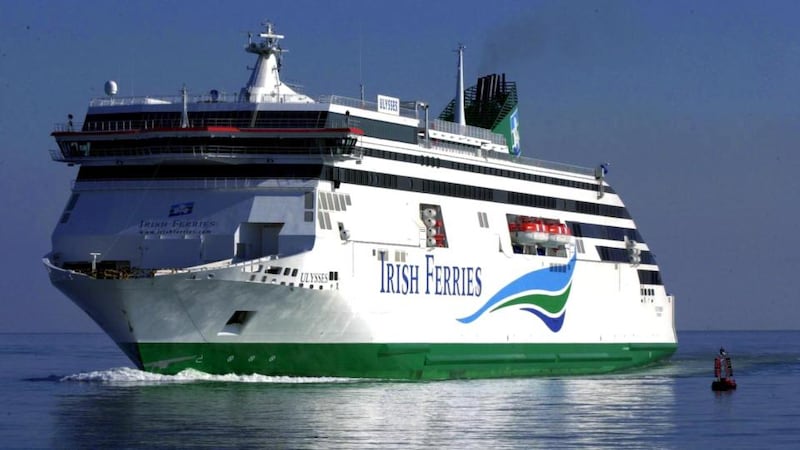Trading statements from an assortment of listed Irish firms and the latest tax data point to a steady improvement in business conditions in the local economy. The figures reflect a deepening of recovery as growth intensifies, with both demand and profits on the rise.
Although multinationals account for most of the ongoing surge in Irish corporation tax returns, the advance also reflects increasing profits in local firms as they burn through legacy tax losses from the crash.
In reply to a parliamentary question this week, Minister for Finance Michael Noonan cited an increase of more than 20 per cent in the number of companies paying between €100,000 and €1 million in corporation tax. Citing Revenue data, Noonan also said receipts from medium-sized companies were up more than 20 per cent, in reply to the question from Fianna Fail spokesman, Michael McGrath.


Moreover, a succession of positive updates to the Dublin and London stock markets in recent days and weeks comes amid clear evidence of rising employment in Ireland and increased consumer spending.
“By and large, from a plc perspective, all of the companies coming out had pretty upbeat assessments of their Irish operations,” says David Holohan, head of research at Merrion Capital.
True, few of the groups listed in Dublin are exclusively focused on the Irish market. That was all for the good when crisis struck, meaning the dire situation at home was not the only determinant of their fate. With the Irish economy on the floor for years, recovery at home lagged the pick-up in the US and Britain.
Domestic demand
Yet the domestic turnaround is increasingly evident this year – and the uplift, after some delay, is feeding well through into trading data from individual firms in a variety of sectors. This goes beyond the advance in property prices, which has been good for Ireland’s three real estate investment trusts and the banks.
All of this might have been expected by now. After all, Ireland boasts the fastest rate of economic growth in Europe.
But Barry Dixon, head of research at Davy, says the turnaround here was slow to filter through to some companies with high exposure to the local economy. The first phase of recovery was driven by investment and exports, Dixon notes. “Now we’re finally seeing recovery in domestic demand, retail and car sales.”
At one level, the lack of quoted Irish retailers means high street conditions here are notoriously difficult to pin down.
Still, Central Statistics Office data indicates that the value of retail sales in September was 4.9 per cent higher than last year and 4.1 per cent stronger excluding motor sales. With Irish consumer prices declining marginally in the same period, the increase in the retail business seems solid enough.
Also, take note that 130,000 more people are at work than in 2012, when unemployment reached its peak.
Company data fills out the picture. In a market statement on Thursday, ferry operator Irish Continental became the latest Irish group to declare an improvement in trading conditions.
Irish Continental said total total passengers carried rose 3 per cent between July and November 7th, the number of cars carried rose 5 per cent, roll-on roll-off freight volumes advanced by 8 per cent and container freight volumes rose 7 per cent. In addition, units lifted at the group’s container ports in Dublin and Belfast rose by 51 per cent.
ICG’s performance illustrates four trends at work in Irish business right now. It has a big exposure to the advance in imports and exports; its links with Britain mean that it benefits from sterling’s strength against the euro; it gains from the low price of oil; and it benefits from increased consumer spending as the economic turnaround prompts Irish people to travel more.
Indeed, ICG was one of three consumer-oriented businesses pinpointed by Goodbody as likely beneficiaries of Ireland’s resurgent growth.
The second was recruitment group CPL, which told investors investors last month that net fees continue to grow across its business. The other was hotel group Dalata, which has said it expects “very strong growth in visitor arrivals” in the first half of the year would continue in the second.
There is more. An interim management statement on Thursday from Woodie’s DIY owner and builders’ merchants group Grafton points to increased expenditure on home improvement and an advance in construction activity.
“The recovery in Irish consumer spending became more broadly based supported by increased employment and disposable incomes and an improvement in consumer confidence,” Grafton noted.
“The Irish merchanting business continued to benefit from the ongoing recovery in the Irish economy which gathered pace during the year. Increased spending on housing residential repair, maintenance and improvement projects was the key driver of demand.”
Grafton also cited the pick-up in house-building -- albeit from a low base -- and said there are signs of revival in the commercial property and civil engineering markets.
Such activity is also likely to be reflected in a market update due next week from building materials giant CRH, whose performance in Ireland is a bellwether for the construction.
Upbeat update
This comes after an upbeat quarterly update last Monday from insulation specialist Kingspan, which had already signalled to investors that it expects significant growth in its Irish revenues to continue for the foreseeable future.
On Tuesday, the DCC conglomerate pointed to “strong growth” in its Irish technology business in the first half of its fiscal year. The group also said the improving local economy was a factor in the advance of its environmental division.
“DCC were out this week, and quite positive about their end markets. There’s no mention of caution,” says Holohan of Merrion.
Similarly, food group Glanbia pointed last week to “revenue-growth and margin recovery” in its Irish dairy business.
Such developments may not be the main event in Irish businesses with large international operations. Still, they are very much in keeping with positive indications from companies in other sectors of Irish economy.
A further example is the rapidly-expanding Ryanair, which earlier this month declared that its half-year profits had eclipsed €1 billion. The airline expects “double-digit” growth this winter in its Irish operation, but that’s alongside similar growth in seven of its other European markets.
Elsewhere, strong summer trading at Aer Lingus saw it contribute an operating profit of €45 million to International Airlines Group between the IAG takeover on August 18th and September 30th. IAG took care to note that the Aer Lingus business is highly seasonal, but it was still a pretty good season for its newly-acquired business.
It’s a given, of course, that the strengthening dollar and sterling helps tourism here and all Irish groups with big American and British revenue streams.
“As a small open economy, weakness in the euro is a definite tailwind to both Irish growth and company earnings,” says David Donnelly, senior investment analyst at Cantor Fitzgerald Ireland.
Amid mounting expectations of a US interest rate rise next month, such weakness appears likely to continue for some time to come.
Indeed, the European Central Bank has signalled a likely expansion of its quantitative easing programme next month.
“A rising interest rate environment is still quite a bit away in the euro zone,” says Dixon of Davy.
But what of other risks? In the week in which British prime minister David Cameron took another step towards a referendum on EU membership, Dixon says “Brexit” remains a potential source of concern. “The consequences are serious but the probability is relatively low . . . It’s a bit like Scottish referendum. It didn’t become an issue until it was an issue.”
There are other potential threats, among them inflationary pressure in market, skills shortages, increased congestion and the shortage of office supply in Dublin.
In the day-to-day trading sense, however, analysts believe the Irish economy is moving along at a fine clip and the latest evidence supports their view.

















